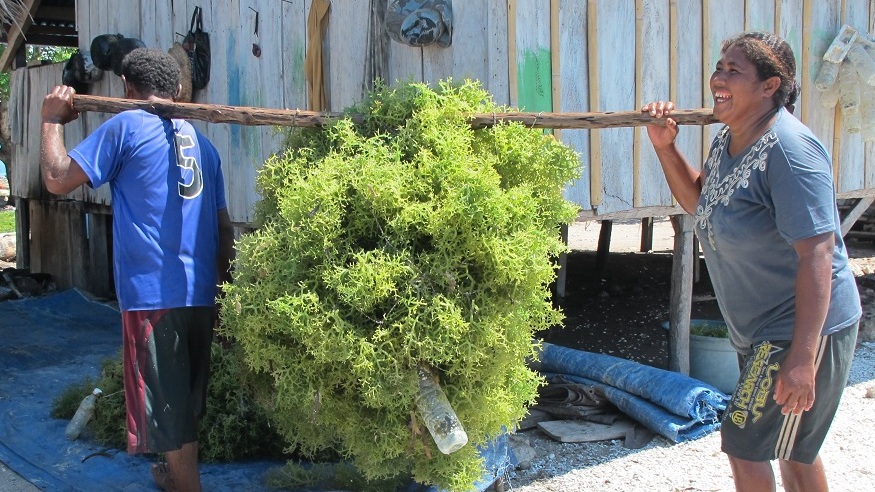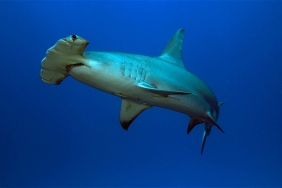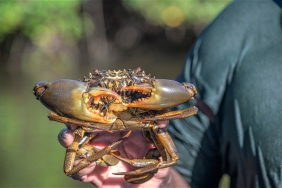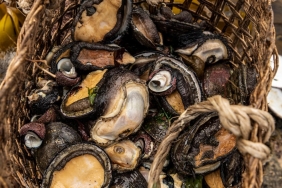IMPROVING THE QUALITY OF GRACILARIA SEAWEED THROUGH THE APPLICATION OF BMP IN SINJAI
By M. Yusuf
Sinjai, South Sulawesi is one of the areas producing seaweed Gracilaria sp. cultivation in Indonesia. Seaweed cultivation of Gracilaria sp. in Sinjai is done by polyculture with milkfish and tiger shrimp. Polyculture with three types of organisms can be done because the existence of the three organisms is mutually beneficial. The milkfish can eat klekap or moss which is a competitor of Gracilaria sp. seaweed, while Gracilaria sp. produces oxygen for the respiration or breathing of milkfish and shrimp. The metabolic products of milkfish and shrimp become organic fertilizer for Gracilaria sp. Milkfish and shrimp can be harvested gradually and sold if the farmer needs money quickly. Therefore, polyculture is the right farming system to increase the farmer's income while maintaining environmental quality.
Polyculture pond cultivation was also one of the materials of the socialization of WWF-Indonesia Aquaculture Program's Better Management Practices (BMP) in Sinjai in mid-October. This activity was an initial introduction to 58 people who attended from groups of pond farmers, Gracilaria sp. collectors, and fisheries extension officers in Sinjai Regency. This socialization was in collaboration with the Sinjai Regency Marine Fisheries Service (DKP) and was opened by the Head of the Service Mr. Sultan H. Tare and the seaweed exporting company Celebes Seaweed Group (CSG) chaired by Mr. Mursalim from Makassar. CSG is the largest seaweed production company in Indonesia that has been operating since 2007. The aquaculture BMPs developed by WWF-Indonesia utilize several national and international standards, such as CBIB (Good Fish Cultivation Practices), SNI (Indonesian National Standard), and the principles of the Aquaculture Stewardship Council (ASC).
The quality of aquaculture products is not only determined by the correct process, but also by proper post-harvest handling. The quality of Gracilaria sp. seaweed is determined by water content or Moisture Content (MC), foreign matter content or Impurity (Imp), gelatinous content viscosity or gel strength (GL), and yield or the amount of gelatinous flour produced from a unit of raw material (Yield). With good quality, in 2014 the price of Gracilaria sp. at the farm level can be around 9,000-9,500 rupiah per kilo and the receiving price at the Makassar export warehouse is around 11,000-11,500 rupiah per kilo.
Sinjai seaweed has the lowest quality among all the Gracilaria sp. production centers in South Sulawesi. This is due to poor seedlings, as well as inappropriate post-harvest methods and handling. However, with proper cultivation and post-harvest methods this can be addressed. Improving the quality of Sinjai's Gracilaria sp. can be done by implementing BMPs through a mentoring program that will be conducted by WWF-Indonesia in collaboration with CSG and DKP Sinjai. Similar seaweed farmer mentoring will also be conducted in two CSG production centers in Bone Regency and Palopo City in the near future.





